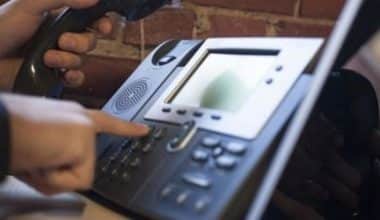Have you ever experienced a situation when a bad network makes you angry? Or maybe lost crucial information that hadn’t yet been saved as a result of network fluctuations? A phenomenon known as “packet loss” may be the cause of everything. This article explains packet loss and how to fix it using the appropriate equipment. In this post, we go over several considerations and a list of fixes for packet loss.
How to Fix Packet Loss
Packet loss occurs when a data set fails to arrive for various reasons. However, incomplete data sets and issues result. Packet loss is commonly attributed to either transmission errors or network congestion. The percentage of packet loss is determined by dividing the number of lost packets by the total number of packets sent. This phenomenon has the potential to result in discernible impairments in the performance of various forms of electronic communication. The most typical reasons for packet loss include:
Network Congestion: Because networks only have a limited amount of bandwidth to transfer data, packet loss happens when there is insufficient available bandwidth. For example, heavy network traffic makes it more difficult for data packets to pass through successfully, a condition known as network congestion. This problem arises in a business or corporate setting when a large number of people connect to the same network and unwittingly jam the connection with streaming, VPNs, data collection, and virtual calls (all of which stretch bandwidth capabilities).
Problems with Network Hardware: Another frequent cause of packet loss is hardware affecting the network, internet, or devices. For example, obsolete routers, modems, and gadgets may have hardware constraints that prevent you from fully utilizing your internet connection.
How to Fix Packet Loss: An 8-Step Procedure
Although it is hard to eliminate packet loss in your network, there are several useful network checks you can perform to increase performance and decrease the amount of packet loss.
1. Examine physical network connections – Check to make sure all ports and cables are installed and connected properly. This might make video games more challenging and could make crucial data disappear.
2. Restart your hardware – Restarting routers and other network hardware might assist to prevent various technical errors or issues.
3. Use cable connections instead of wireless connections – Using cable connections instead of wireless connections can improve connection quality.
4. Remove interference sources – Remove anything that could be creating interference. Power lines, cameras, wireless speakers, and wireless phones can create network interference.
5. If you’re using WiFi, do this. Consider switching to a cable connection to assist reduce packet loss.
6. Update device software – Keeping your devices updated will help to ensure that there are no issues in the operating system that are causing packet loss.
7. Replace obsolete or defective hardware – By upgrading your network infrastructure, you can eliminate deficient hardware entirely.
8. Use QoS settings to prioritize your network traffic based on the most important applications. Prioritize voice or video traffic, for example.
Packet loss could occur as a result of a malfunction or inefficiency in a component that transports data over a network, such as a defective router, a loose cable connection, or poor wifi signal strength. Lost packets can sometimes be employed on purpose, such as when limiting throughput during VoIP calls or video streaming to eliminate time lags, especially during times of heavy network congestion.
How to Fix Packet Loss Fortnite
Since 2017, Fortnite has been making its way through the gaming world. The developers’ efforts have yielded tremendous dividends over the years, and it is now one of the most popular titles in the community. The game has several million active players. To handle so many players, Epic must maintain the servers on a regular basis to avoid latency and packet loss. Packet loss occurs when Epic’s servers slow down or when drivers fail. It can also happen if players connect to the wrong servers. This article will explain how to resolve the packet loss issue in Fortnite.
#1. Verify the Fortnite Servers
At any given time, the game has over a million participants. As a result, it is very likely that the servers are having problems that are causing packet loss. It is possible for in-game servers to have issues, which can cause disruptions in communication with the Epic Games servers. To determine whether the servers are up and running, loopers should go to the Epic Games Status page. In the event that the servers are down, players should hold off until the project is complete.
#2. Verify the Device’s Network Connection
A network connection adjustment is one of the most fundamental fixes for packet loss. Frequently, the device’s connection problems stop the data from leaving Epic’s server. As a result, the game experiences latency and packet losses. Players should reset the network fidelity to resolve this issue and restart the connection.
#3. Restart the Device
Sometimes the servers are unable to create a secure connection because of flaws in the device. This causes significant lags and makes it challenging to identify the problem. Players only need to restart their devices in order for the system to fix the problem. Once it is complete, players can see whether they are having any problems accessing the game.
#4. Update Network Drivers
There may be a large packet loss in Fortnite due to malfunctioning network drivers. Any type of connection between the servers will be impossible due to the compromised drivers. Players will need to take the following actions in order to resolve this problem:
- Launching Device Manager
- Find the network driver by going to Network Adapters.
- Right-click on it to display the choices once you’ve discovered it.
- Select Update Driver from the menu.
- Restarting the device will make the update take effect.
How to Fix Packet Loss Valorant
Unbelievable as it may seem, poor internet connectivity and packet loss are among the main causes of VALORANT players quitting rated games. No matter how good of a player you are, how much experience you have, or what kind of gaming equipment you have, if your internet connection is bad, you won’t be able to advance very far in the game. You might find it difficult to focus on your game when it stutters or lags. It may take some time to thoroughly diagnose and fix these issues. But don’t worry; we have some advice that you can use to remedy the situation yourself. We’ve gathered a list of packet loss cures, including restarting the router, getting in touch with your Internet service provider, and other workarounds.
#1. Restarting the Internet Connection or Router
Restarting your router can be difficult to remember to do at times. But when you do, it can shield you from a variety of problems. It first assists by resolving problems that cause Internet disconnections. Your router may occasionally become sluggish and perform badly when transferring data to you. Restarting the router will allow you to go online and transfer data much more quickly! To increase WiFi speed, you should restart your router. Everybody wants quicker speeds, and occasionally a restart will help! When updating, it’s also a good idea to restart your router.
#2. Cable Connection
You can take a few actions if you notice that your gaming sessions are suffering from excessive packet loss. Use a wired data connection rather than a wireless one, for starters. If you are experiencing any Valorant lags, it can also be helpful.
#3. Update Your OS and Drivers
Updating your computer and internet drivers should be your top priority if you enjoy playing video games. Old drivers, especially those for the internet, can cause packet loss and slow internet. Update your drivers and OS before making any modifications.
#4. Modify and clear the DNS cache
Clearing the DNS cacheWhen you see that your Internet is not functioning properly, try to flush and clear. Windows’ DNS Cache utility will flush your IP address and other DNS record cache. This will fix any difficulties with connectivity, security, and other issues.
Steps:
- Access your Start menu.
- Open as an administrator after typing cmd
- Now enter the command ipconfig/flushdns in CMD.
- Launch your computer again
How to Fix Packet Loss PS4 Warzone
A prevalent gaming issue that negatively impacted players’ experiences was Packet loss in Warzone. You will learn everything there is to know about Warzone packet loss in this post, including its causes and solutions. With millions of players, the battle royale video game Warzone, also known as Call of Duty: Warzone, is very well-liked. One of the most popular games in the Call of Duty series is Warzone. Activision released the game on March 10, 2020, after two developers, Infinity Ward, and Raven Software, jointly worked on it.
#1. Make a Different Connection.
Even though using a wireless connection could be more practical, especially if you’re far from your router, a cable connection is always preferable. Wired connections also offer a more consistent and stable connection, so it’s not only about speed. While wireless connections can take up to 100m/s throughout your data transfer, having a wired or fiber optic line allows for data transfer in less than 10ms. In Call of Duty, a wired connection offers a rather reliable connection and lowers the likelihood of packet loss.
#2. Boost Your Connection’s Bandwidth.
It’s also critical to verify the upload and download speeds that your Internet service provider (ISP) has allotted to you. Increase your device’s download and upload rates. Changing it can hurt your money if it’s too low. If it’s adequate but you still experience bandwidth throttling occasionally, it’s likely the result of multiple downloads and applications that are using the available bandwidth.
#3. Reset the Network Settings.
Check to see whether your computer has any additional programs that connect to the Internet. Utilizing the Task Manager’s Resource Manager, you may verify this. When prompted, type “Command Prompt” by pressing Windows + R. Then, right-click the program and choose “Run as administrator.”
Run the following commands once you’re in an elevated command prompt:
ipconfig /release
ipconfig /renew
netsh winsock rese
How to Fix Packet Loss on Xbox
Xbox High Packet Loss errors on your Xbox One or Series X/S are likely to cause slowing and crash from some kind of error that restricts your Xbox’s ability to transfer data packets online. Given that those data packets are essential to online gaming, this can be a problem. On Xbox Series X/S and Xbox One, packet loss can have a variety of causes, so we’ll go over them below and discuss some solutions. Players can try a range of repairs and treatments because there are numerous problems that can all result in packet loss. Check out the following list to see if any of them work:
#1. Reset Your Connection and Router.
If the problem is on your end, try turning off and on your router and disconnecting and rejoining your Xbox.
#2. Switch From Wi-Fi to a Cable Connection.
In general, wired connections are more dependable and stable than wireless ones. Move the ethernet cable to a different port on the router if you already have a wired connection, or try a different cable entirely.
#3. Verify Whether Any Other Software or Hardware is Utilizing the Connection.
Lots of traffic and attempting to maintain numerous connections at once can frequently cause packet loss. Get any other family members who are playing video games or watching web movieS to quit and see if it makes a difference.
Best Tools to Fix Packet Loss
These three tools will enable you to resolve the Packet Loss problem.
#1. Network Performance Monitor
It is a well-known tool for dealing with the packet loss problem. It helps you manage all types of network-related issues, improve network security, and save time. configurations all in one place. You can manage the routers and prevent security misconfiguration with its assistance. A switch or other traffic processing device may start to approach its capacity limits, which triggers an alarm from SolarWinds Network Performance Monitor, which automates network device monitoring. Given that network device overload is the primary cause of packet loss, this feature is excellent for preventing packet loss. An extra module that costs money is available to get traffic analysis.
#2. SolarWinds VoIP and Network Quality Manager.
This tool focuses in particular on the network circumstances necessary for successful VoIP traffic delivery. This module focuses on the metric of packet loss because it is a significant issue with Voice Over IP. The system has a visualization module that displays the VoIP paths taken as well as the status of each node’s health in terms of color. This product covers the entire WAN and extends VoIP quality monitoring across sites. Any network management could use SolarWinds Network Performance Monitor’s services to its advantage. However, since every tool on this list provides the exact same service, prospective customers should consider a few different possibilities before making a choice.
#3. Paessler
The best solution for packet loss problems is Paessler. It aids in the monitoring of all the hardware, software, and network traffic in your IT infrastructure. It contains additional sensors that make it easier to keep an eye on servers and software. Additionally, it enables you to monitor particular datasets from your database using specially set up PRTG sensors.
How Do I Stop Packet Loss?
Even with a fast internet connection, packet loss can still happen. Switching from Wi-Fi to ethernet, changing ethernet ports, and power cycling your router are all basic troubleshooting techniques. You can also access the router’s settings to activate Quality of Service (QoS) settings or update the firmware.
What Causes Packet Loss?
Inadequate signal strength at the destination, outside interference, excessive system noise, defective software, or overloaded network nodes are some of the factors that might cause packet loss. Frequently, more than one of these elements is at play.
How Do I Fix 80% Packet Loss?
Fixing Packet Loss
- Switch off your computer. Whether it’s a program, service, or driver, software operating on your computer may experience issues from time to time.
- Examine the connections.
- Make use of a wired connection.
- Update the device’s software.
- Eliminate Interference Sources.
- Replace or upgrade your hardware, and then use the QoS setting.
Is 1% Packet Loss Bad?
A packet loss rate of 1 to 2.5 percent is typically considered to be acceptable. Wi-Fi networks typically experience higher packet loss rates than wired ones.
Can Resetting Wi-Fi Fix Packet Loss?
Reset the router or the device if your signal is weak or intermittent to see if it improves. If not, check the Wi-Fi settings to see if the problem causing packet loss is there. If necessary, configure your device to connect to another Wi-Fi network, or better yet, utilize a cable connection.
Is Packet Loss Due to Bad Internet?
Inadequate signal strength at the destination, outside interference, excessive system noise, defective software, or overloaded network nodes are some of the factors that might cause packet loss. Frequently, more than one of these elements is at play. These additional factors are just a few: network sluggishness.
Does Packet Loss Cause Lag?
The loss of data packets during communication between your PC and a gaming server is known as packet loss. When there is packet loss, certain packets don’t only take a long time to get from client to host; they also never get there at all. Lag results from the need to resend the packet when this occurs.
Final Verdict
While expected, some packet loss is typically not a serious issue. The size and dependability of the network have a significant impact on the projected rate of packet loss. The chance of packet loss increases with the number of hops a communication must make. over a private network, packet loss should be much lower than it is over the internet. Additionally, under normal circumstances, tiny networks ought to have less packet loss than large networks. A packet loss rate of 1 to 2.5 percent is typically considered to be acceptable. In comparison to wired systems, WiFi networks typically experience higher packet loss rates.
Related Contents
- NETWORK SECURITY KEY: What It Is and How to Find It
- FIX MY CREDIT: Easy Way to Fix Your Credit in 2023
- 6 Elements for Effective Business Leadership
- COMPUTER TECHNICIAN: Meaning, Salary, Skills, Courses & Repairs






